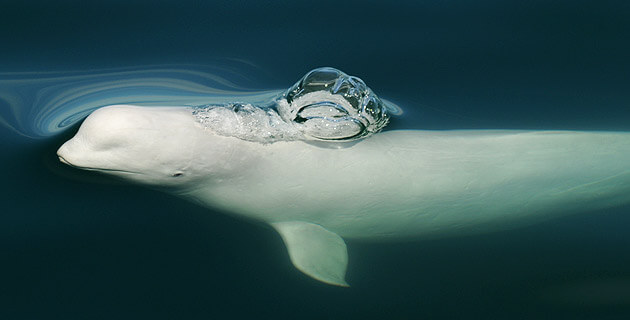Despite the measures that have been put into place in Canada since 2006 to reduce the concentrations of certain flame retardants (polybrominated diphenyl ethers, or PBDEs) in the environment, these contaminants are still present in the St. Lawrence beluga, reveals a recently published study. PBDE concentrations in St. Lawrence belugas are roughly 4 times higher than those of minke whales in the St. Lawrence or belugas in the Canadian Arctic. This study also demonstrates for the first time that “emerging” flame retardants, some of which are used as substitutes for PBDEs, are accumulating in the fat of this endangered population.
What are flame retardants?
Flame retardants, as their name suggests, are compounds used to reduce the risk of fire in synthetic materials. They are added by manufacturers to various consumer products such as mattresses, upholstered furniture, textiles, plastics, electronics, etc.
PBDEs have been one of the most widely employed families of flame retardants in North America since the 1970s. Since 2006, it has been recognized that PBDEs spread in the environment over long distances, are persistent, bioaccumulate in organisms and may have adverse effects on the health of animal species, notably with regard to their hormonal system, growth, reproduction, behaviour and development. They are thus no longer used in Canada.
Regulatory measures on PBDEs have resulted in the production and use of so-called “emerging” alternate flame retardants, though little is known about the quantities of products used, their accumulation in the environment or their toxicity.
Why are we finding flame retardants in whales?
Since PBDEs are not chemically bonded to materials, they can be released into the environment during the manufacturing, life cycle and disposal phases of the articles that contain them. They accumulate on their way up the food chain and can be found in very high concentrations in some predators. The highest concentrations have been measured in species living in proximity to industrialized areas, such as marine mammals in the St. Lawrence. However, the presence of PBDEs in Arctic biota indicates that these contaminants can also be transported over long distances through the atmosphere.
PBDE levels in the St. Lawrence beluga grew rapidly between 1987 and 1997. Researchers are questioning the potential impact of these contaminants on the reproductive success of this population, in which high mortality of mothers and newborns has been observed since 2010.
Highly contaminated populations
Researchers compared the concentrations of 35 PBDEs and 13 emerging flame retardants in the fat of belugas and minke whales found dead in the Gulf of St. Lawrence and its Estuary as well as in belugas harvested by Inuit hunters in waters off Nunavik (the part of Quebec located above the 55th parallel north).
The study reported higher concentrations of flame retardants in the St. Lawrence beluga than in the other two cetacean populations studied. This result can be explained by the fact that the St. Lawrence beluga belongs to a higher trophic level (higher in the food chain) than the minke whale, that it lives closer to local sources of flame retardants (major cities along the river and the Great Lakes) than the Nunavik beluga, and that it is a year-round resident in the St. Lawrence, unlike the minke whale, which is a seasonal visitor. According to researchers, the St. Lawrence beluga is one of the most exposed marine mammals to PBDEs in the world and is the second most contaminated marine mammal by these chemical compounds in Canada after the resident killer whales along the British Columbia coast.
Although the minke whale is less contaminated by PBDEs than the St. Lawrence beluga, PBDE levels in its fat are approximately 1.5 to 7 times higher than those observed in minke whales off Korea, Japan, the United Kingdom, Greenland, Iceland and Norway.
To the researchers’ surprise, certain emerging flame retardants were detected for the first time in the fat of Nunavik belugas. The concentrations of two flame retardants (Dechlorane Plus and Dechlorane 604 Component B) were even higher in Nunavik belugas than in St. Lawrence belugas.
St. Lawrence beluga still contaminated with PBDEs
The study did not show any significant change in PBDE concentrations in the fat of St. Lawrence belugas between 1997 and 2013. This suggests that the regulations in place in North America and elsewhere for these contaminants are too recent to allow any effect to be observed in this animal, which has a long life expectancy (40-60 years).
“Many products containing PBDEs are still in use or are being recycled or disposed of and continue to emit PBDEs into the environment,” explains Jonathan Verreault, professor at UQAM’s (Université du Québec à Montréal) Research Laboratory in Environmental Toxicology (TOXEN) and co-author of the study. “It may therefore be several more years before we are able to observe a reduction in contamination levels, as has been the case for PCBs and other organochlorines following their ban,” he concludes.





